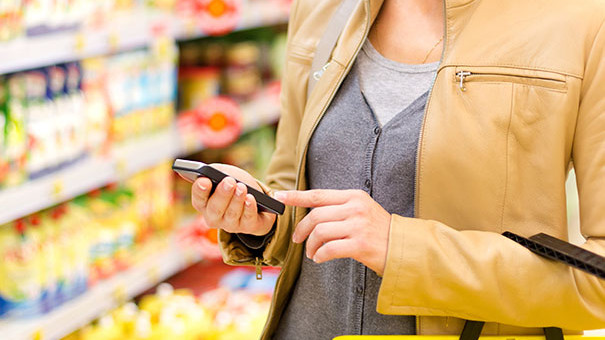
If you are not testing mobile marketing at physical retail, you are not ahead of the game.
Mobile marketing has been making waves in the business world. Google published its YouTube video explaining the power of the Mobile Advertising movement over three years ago. However, you may not have been up-to-date with the seismic shifts that are happening currently inside physical retail stores.
92 million adult Americans use smartphone apps while shopping in stores, according to Digitas’ Connected Commerce. Retailers are focusing on Showrooming (the practice of browsing in-store and buying online) and 96% of smartphone owners say they plan to Showroom in the future, according to Aprimo. So whether retailers are prepared for it or not, in-store shopper marketing is ready for change.
I was honored to speak at Media Post’s inaugural Beacons Conference, and I’d like to share with you some of the things that are currently changing physical retail shopping as we previously have known it.
What are Beacons? A brief description is that a beacon is a small physical device that communicates through short-range signals with other beacon devices. Though not always the case, we can usually think of multiple beacon devices in a retail environment exchanging signals with a shopper’s mobile smartphone, which is acting as another beacon device.
If you’re unaccustomed with the technology, I wrote a whitepaper on Beacons that will quickly get you up to speed on the Apple announcement, Google’s adoption, and the many use cases associated with the implementation of beacons at retail. I became optimistic about beacons when Walmart announced that it would incorporate beacons into store LED light fixtures. Generally speaking, where Walmart goes, mass retailer follows.
Insights from Media Post Conference While there were a lot of useful insights and conversations happening at the Media Post Beacons Conference, there were a few common themes that I’d like to share regarding retail transformation:
- Results published by InMarket in 2014 showed an increase of about 20X purchase intent for companies such as McCormick, Hillshire and other early adopter brands. Early adopters of the in-store beacons experience are seeing huge sales bumps. In addition, InMarket has determined that a coupon (to date) has not made a statistically significant difference in this increase in purchase intent via their continued A-B offer testing.
- Ryan Craver, (former) SVP and Chief of Staff for Hundson’s Bay and Lord & Taylor shared that both brands are devoted to a national roll-out of beacon technology this year, as they have found that not all customers who enter their store want to talk to a human. Instead, they realized that mobile enhances the shopping experience and is increasing sell-through.
- Andrew Haynes, Director of Digital Personalization at Marriott International shared the benefits of beacon-driven, localized perks that will offer a more mobile-centric approach–from booking your room to receiving freebies and relevant insights throughout your stay. Along the same lines, Hilton will replace hotel keys with smartphones this year.
- Retailers are (rightly) worried about the potential negative impact of beacon technology. While mobile users must opt-in to beacon notifications, it’s imperative as marketers not to exhaust the technology (i.e. don’t blow up mobile devices with invasive, obnoxious slot machine antics). Leigh Christie, Lead Innovation Engineer at Isobar asserts, “Location aware is NOT contextually aware”, meaning that just because you know someone is in your store, doesn’t mean you know the context of what they are looking for, so proceed with caution.
This is only the beginning. There’s truly no way to grasp all the useful insights and information shared this week. The only thing that is clear is: if you are a manufacturer and you’re not testing mobile marketing at physical retail, you are falling behind. Going off of the 20X increase in purchase intent, early reported results are not incremental, but exponential.
If you are a brick and mortar retailer, meet your future. Reflect on “big data meets real-time decision making,” which is similar to the Amazon.com eCommerce model manifested in physical retail. The introduction of beacons and other mobile technology has helped to finally unlock all that data you’ve been storing for the past few decades and incorporate it into a more interesting and relevant shopping experience. If you don’t figure out this digital path to physical purchase, you can bet that other retailers will.
